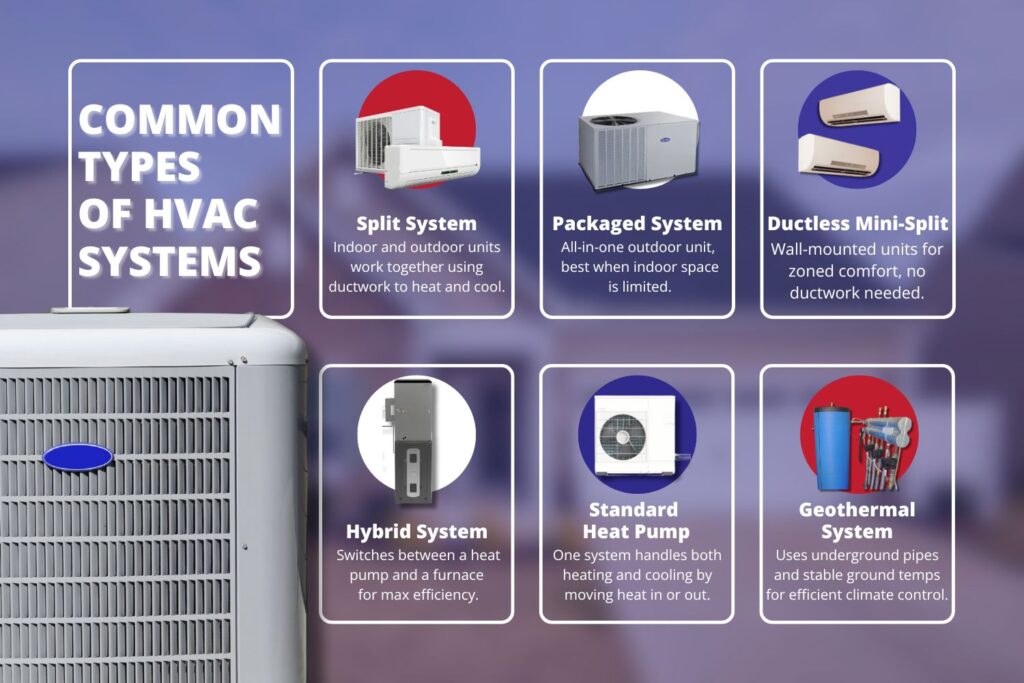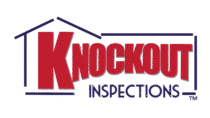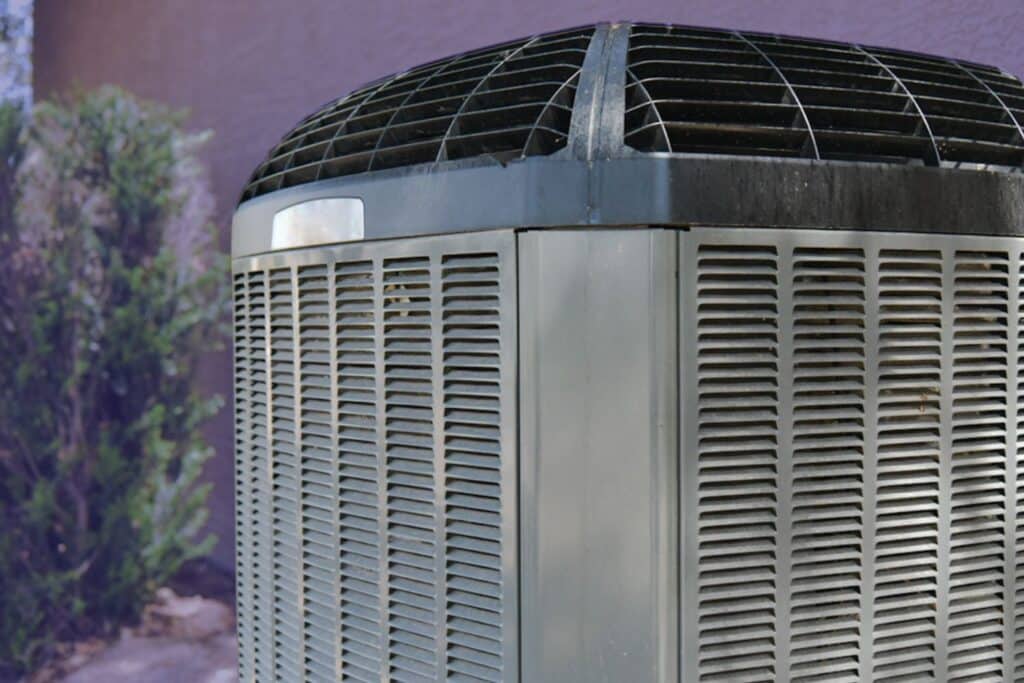If you’re looking to understand the common types of HVAC systems used in homes today, you’re in the right place. Whether you’re buying, selling, or maintaining a property, knowing what kind of system you’re dealing with can help you make better choices.
HVAC stands for heating, ventilation, and air conditioning. At Knockout Inspections, we’ve inspected thousands of properties across the country. We specialize in HVAC system inspections, duct testing, Manual D duct design, blower door testing, and more. We’ve evaluated thousands of systems across the country, and we know how much HVAC performance impacts your energy efficiency, air quality, and comfort.
Here’s what you need to know about the most common types of HVAC systems, how they operate, and what to look out for during an inspection.
Split HVAC Systems
Split systems are the most common HVAC setup found in single-family homes. They include one unit inside the home and one outside. The indoor unit is typically a furnace or air handler, while the outdoor unit is either an air conditioner or heat pump.
These systems use ductwork to distribute conditioned air throughout the home. Split systems are often cost-effective and relatively easy to maintain. However, they rely heavily on duct quality. If the ducts are poorly sealed or the system is improperly sized, you can lose a lot of efficiency.
Packaged HVAC Systems
In a packaged system, the heating and cooling components are housed in a single outdoor unit. These systems are often placed on the roof or next to the home on a concrete pad. They are most common in homes with limited indoor space in warmer climates.
Because the entire system is outside, it is more exposed to the elements. That can speed up wear and tear. During inspections, we look closely for signs of rust, weather damage, and debris buildup around the unit.

Ductless Mini-Split Systems
Mini-splits are a ductless HVAC option that gives homeowners greater control over individual rooms. Each room or zone has its own wall-mounted unit, connected to an outdoor compressor.
These systems are ideal for additions, older homes without ducts, or properties that need flexible zoning. They are efficient and quiet, but they require regular cleaning and maintenance. We often find clogged filters, poorly installed units, or refrigerant leaks during inspections.
Hybrid Systems
Hybrid systems combine a gas furnace with an electric heat pump. This allows the system to choose the most efficient heat source depending on the outside temperature.
On mild days, the heat pump handles heating duties. When temperatures drop, the system switches to the gas furnace. Homeowners like this setup for its efficiency, but it is important to make sure the switching mechanism is functioning correctly. Improper calibration can cause the system to rely too much on one mode, which drives up costs.
Standard Heat Pumps
A heat pump is an all-in-one system that handles both heating and cooling. It works by moving heat rather than generating it. In summer, it pulls warm air from inside your home and pushes it outside. In winter, it does the reverse.
These systems are especially popular in moderate climates, but they can also be used in colder areas with an auxiliary heat source. When inspecting heat pumps, we check the reversing valve, condenser coils, and thermostat settings to make sure everything switches correctly between heating and cooling modes.
Geothermal Systems
Geothermal systems use the consistent temperature of the ground to heat and cool your home. Pipes filled with fluid are buried underground and connected to a heat pump inside the house.
These systems are extremely efficient and long lasting, but they are expensive to install and not ideal for every property. During inspections, we check system pressure, insulation on the loop piping, and drainage near the loop field. Any signs of leaks or shifting soil could be a concern.

What Inspectors Check in HVAC Systems
Regardless of the system type, here are the main issues we look for:
- Age and overall condition of the unit
- Proper installation and secure mounting
- Signs of water damage, rust, or leaks
- Functionality of thermostats and controls
- Duct condition, including signs of gaps or contamination
- Airflow at vents and registers
- Unusual noises during operation
These signs help us flag potential problems and give buyers or owners a clear picture of what to expect.
When to Call a Pro
Not all HVAC issues require a full replacement, but some signs mean it is time to bring in an expert. If the system is over 15 years old, has frequent breakdowns, or uses outdated refrigerant like R-22, it is time for an HVAC professional to take a closer look.
We also recommend calling a technician if:
- The home does not heat or cool evenly
- The energy bills are higher than expected
- You notice water pooling near the indoor unit
- The thermostat settings do not match the actual temperature
As inspectors, we can identify red flags, but we do not open sealed units or perform repairs. Our role is to give you enough insight to take the next step with confidence.
Final Thoughts
Understanding the common types of HVAC systems is not just useful for contractors or technicians. It is a smart move for any homeowner or buyer who wants to make informed decisions about comfort and cost.
Whether you are dealing with a traditional split system, a modern mini-split, or something more specialized like geothermal, our team at KO Inspections can help you understand what is working, what needs attention, and how to plan ahead.
If you are unsure about the HVAC system in your current or future home, schedule an inspection and we will give you a full breakdown.

